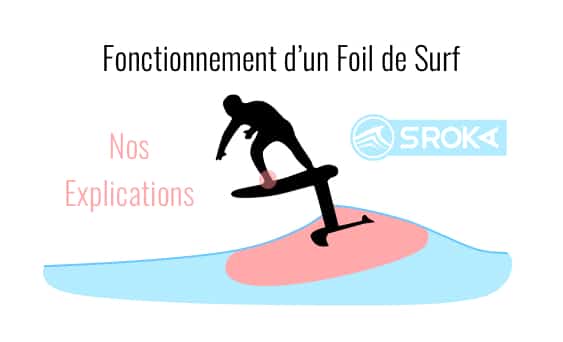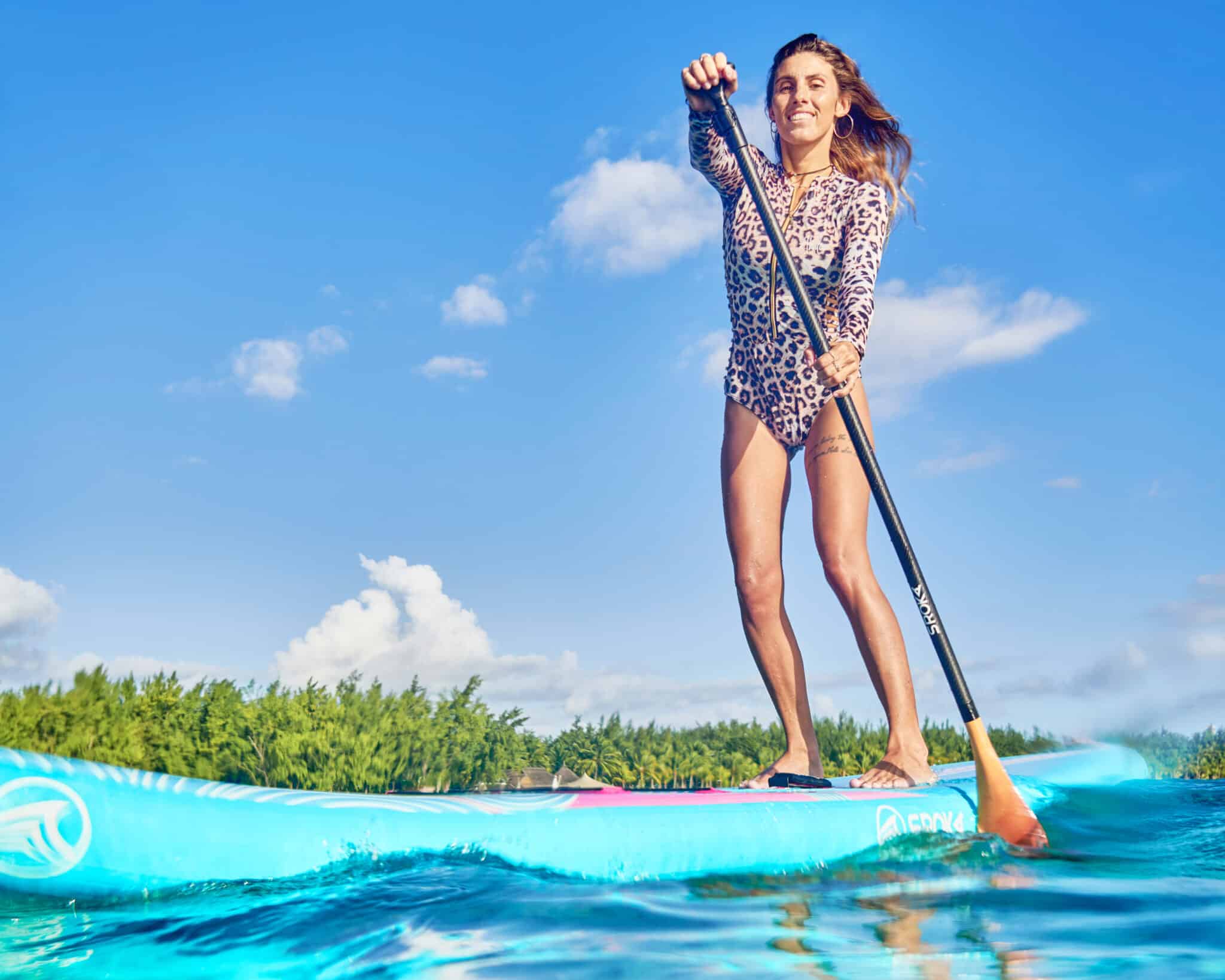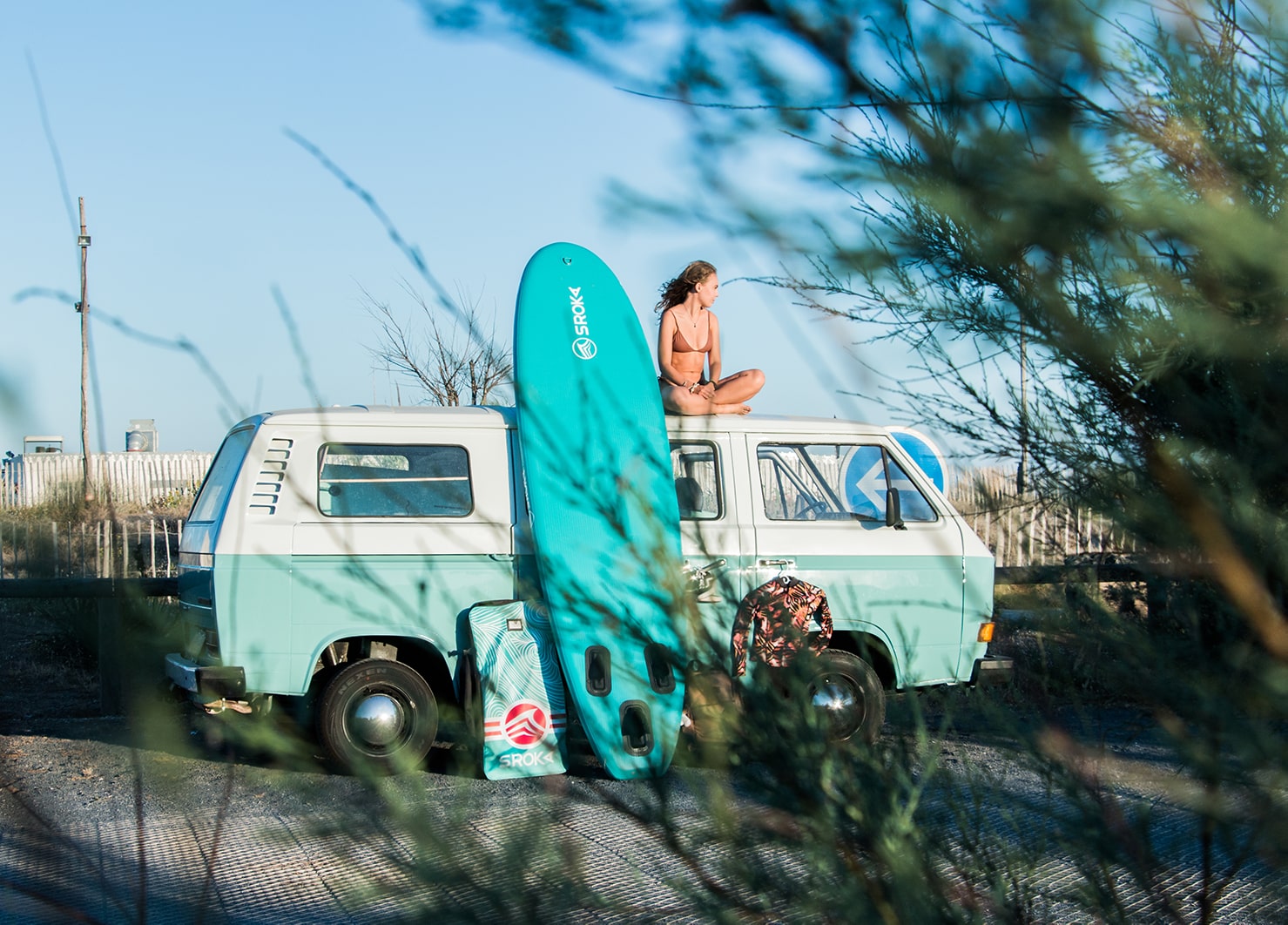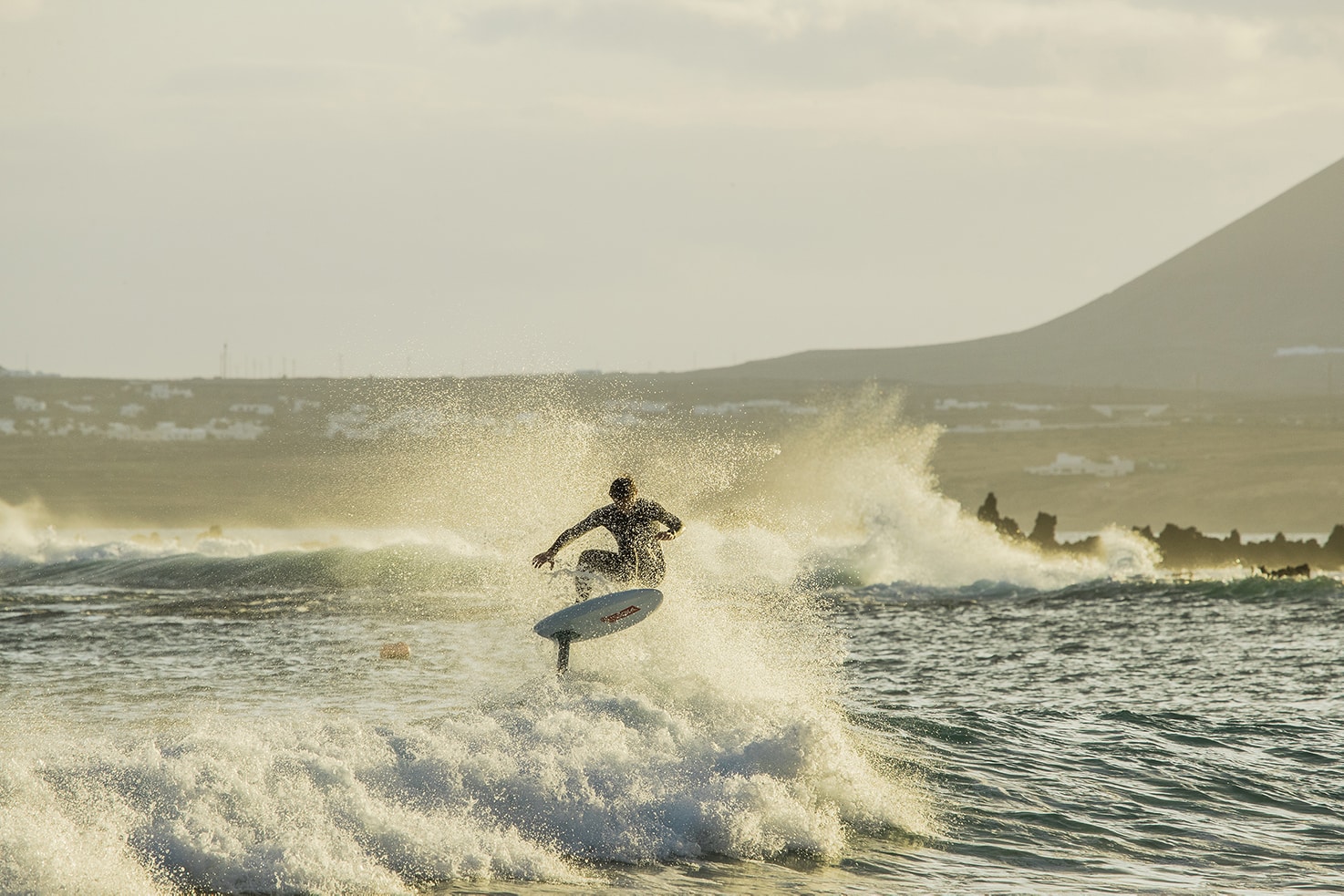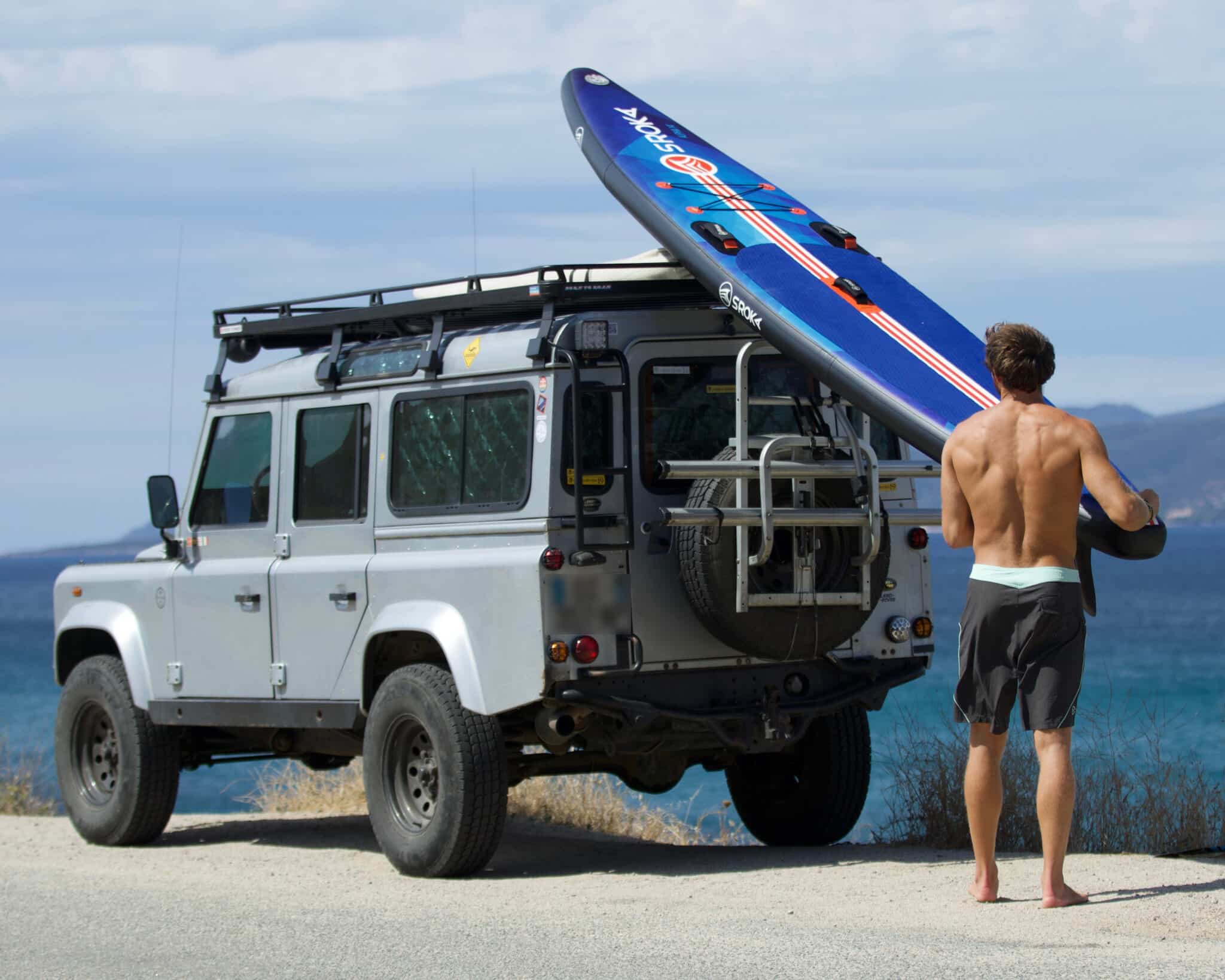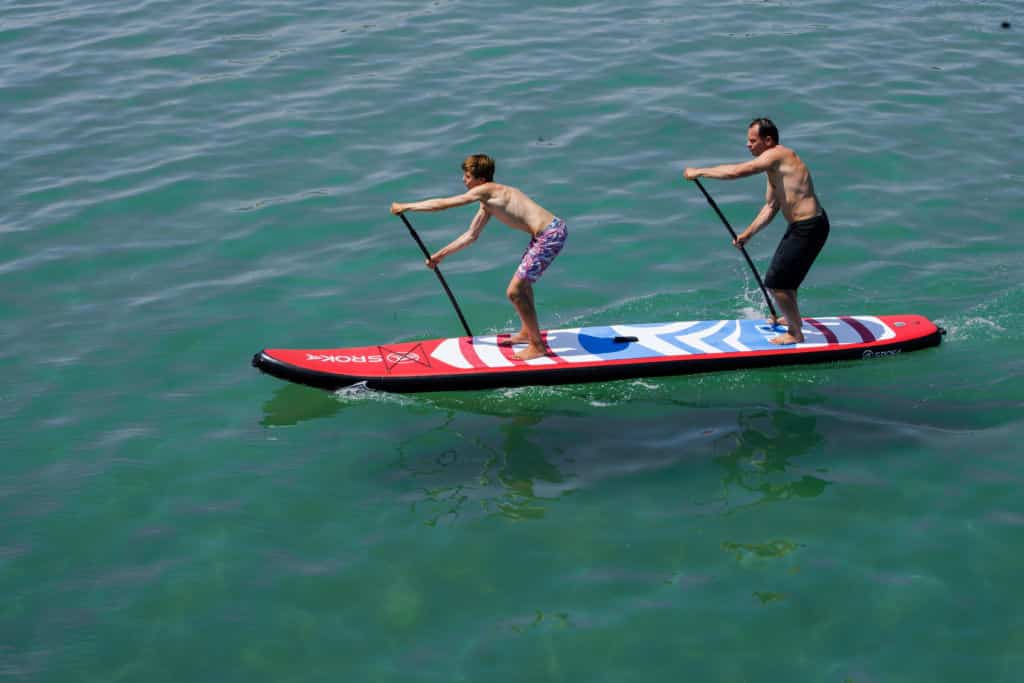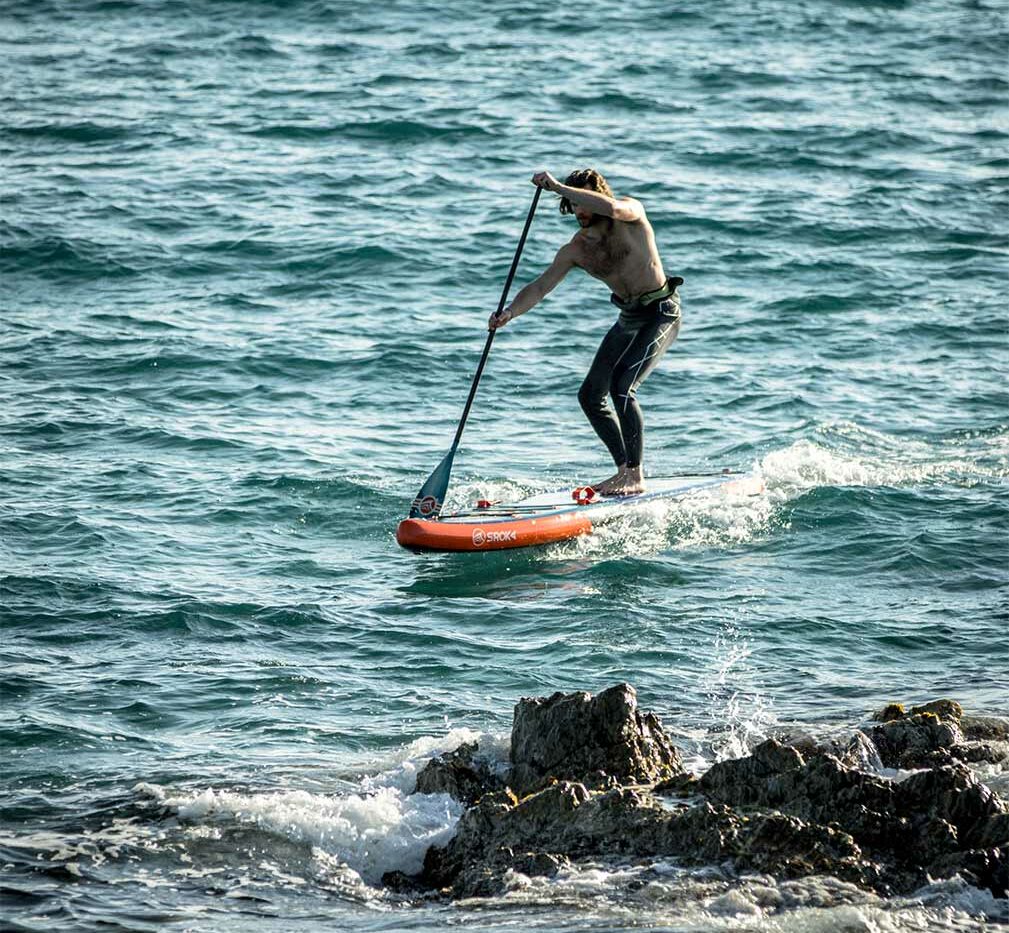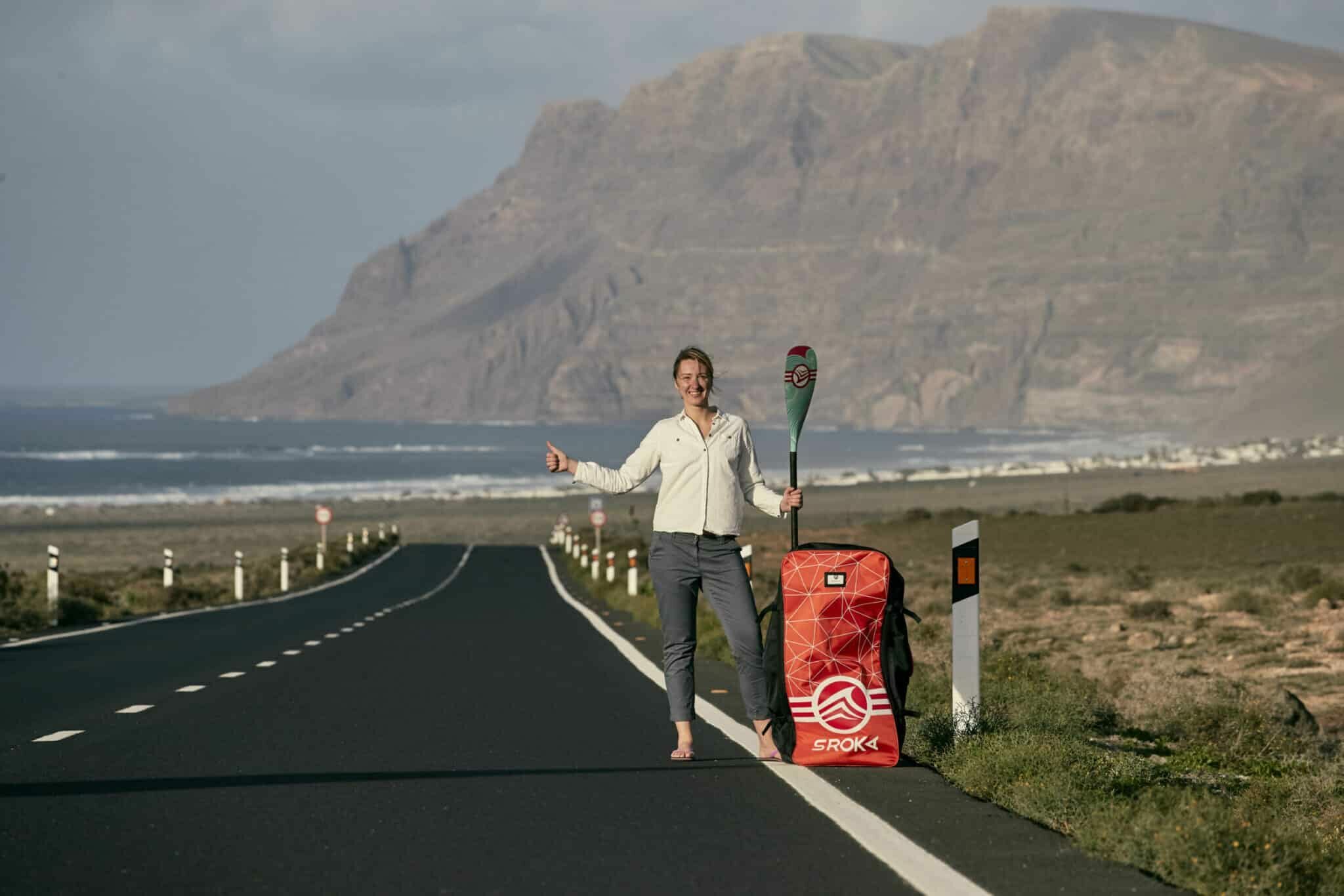 LE MAGAZINE
LE MAGAZINEHow to get up in a wing foil

Prerequisites and equipment:
Before attempting to lift, make sure you have enough depth underwater to avoid damaging the foil. Equip yourself with a wingfoil board adapted to your weight, a wing adapted to your size and a stablefoil to start with. If you weigh 80 kg, we recommend a 1750 cm² foil and a 5 m wing. Don’t forget your leash for the board and wing, so you don’t lose your equipment.
The ideal conditions for progressing in wing foil are: a side wind between 15 and 20 knots, calm seas and sufficient space to return to the beach in case you don’t drift downwind. Beginners drift a lot at first
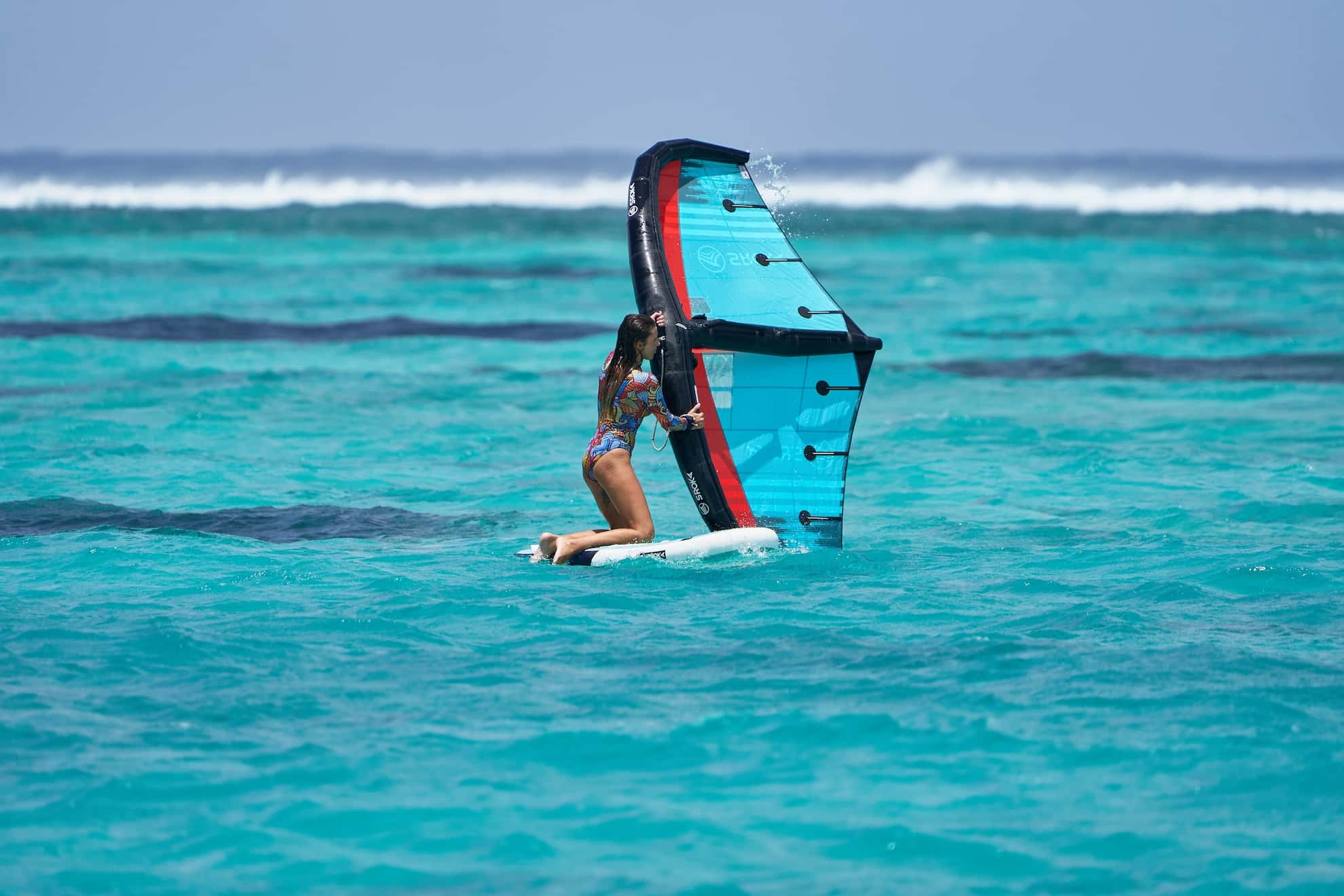
1. Climb up and sit on the plank or immediately kneel down.
Before you can get down on your knees, sit astride the board. This will keep you very stable and allow you to take time to observe the water, your trajectory and to check that there are no obstacles in front of you.
When you’re in this position, take the opportunity to turn your kite the right way round for easier retrieval. To do this, pick up one end of the wing and rotate it in the water. To prevent the wing from turning over again, we advise you to hold the wing by the leash, but as close to the wing as possible. This will prevent it from turning over again.
Variant
If you’re very stable, go straight to the kneeling position and turn your wing in the right direction.
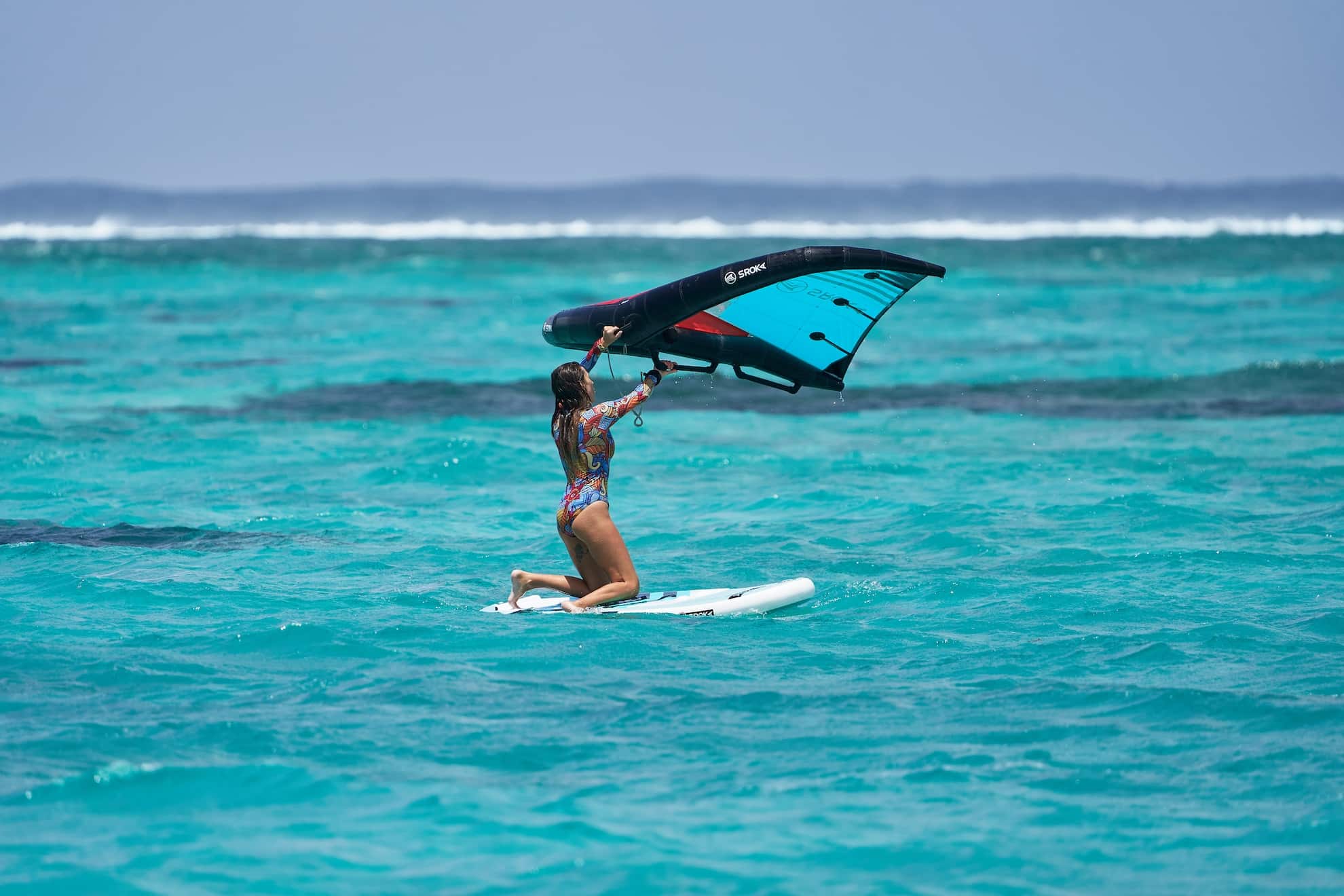
2. Go from sitting to kneeling on the plank
Place both hands on the rail to the right and left of the board, then use your hands to get down on your knees. If you’re having stability problems, you can lean on the leading edge of your wing with one of your hands to stabilize yourself on the water.
In this position, bring the wing overhead without either end touching the water. Orient your wing so that it catches the wind by pulling on the back hand, allowing the kite to inflate. Find a stable, balanced position on the board, then let yourself glide across the water.
If you wish to slow down, keep the wing almost neutral (hold out your back hand) to prevent it from inflating further (flag position).
Variants:
Some people prefer to climb the board not in line with it, but perpendicular to it. This technique may help in some cases, but it may cause problems on very small boards in the future. So we don’t recommend it.

3. Stand up:
It’s easier to move the board to get on it than to stand still. In fact, moving the board optimizes the float’s lift.
Here are the steps to get up in wing foil:
Kneeling position:
-
- Kneel on the board, positioning your front foot in line with the board’s longitudinal axis.
- Press this foot to stand up.
- Next, position the rear foot centered over the mast on foil.
- Remember: your center of gravity (between your legs) must be above the front fin for balance in flight.

Foot spacing:
-
- Your feet should be the same distance apart as your shoulders.
Tip: if your front foot is slightly shifted towards the windward rail, your rear foot should be proportionally shifted to the other side to keep your center of gravity above the board’s longitudinal axis.

4. Gain speed for take-off.
As a beginner, you’re going to take off like an Airbus A380. It’s therefore essential to build up horizontal speed, as this will enable you to generate lift on your front wing, and thus get off the ground.
Here are the steps to follow:
-
Find the location that’s right for you:
- Look for a suitable place to progress.
-
Get up to speed:
- Tuck in your back hand while staying as upright as possible on the board.
- Make sure the mast and your body remain on the same axis to facilitate lateral stability.
-
Take-off:
- When the speed is sufficient, press lightly on the back leg to lift the board out of the water and start flying.
-
Stop:
- If you need to stop, release the back hand and press the front hand a little more to bring the board down towards the water.
In a nutshell
From the seated position, I come to my knees while holding my kite by the leash, near the leading edge. Next, position your kite overhead and tuck in with your back hand, taking care that the kite tips don’t touch the water. Put your front foot on the board, then push off with your leg to place your second foot over the mast. Pick up speed and fly away.
To stop, release the back hand, decrease the height and place the board in the water. Be careful not to touch the bottom with your foil.
If you have any further questions, or if you have any other requests, please don’t hesitate to contact us!
 Le Magazine
Le Magazine



